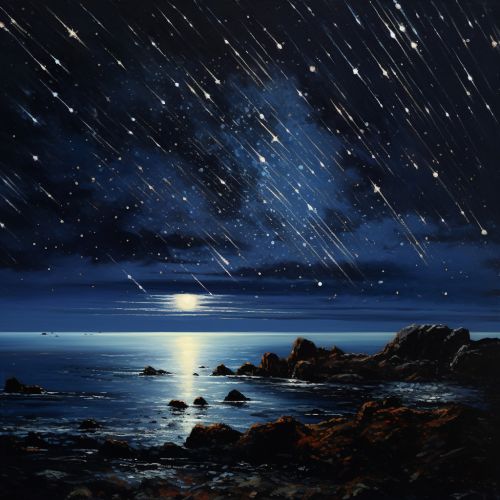Meteor Shower
Introduction
A meteor shower is a celestial event where a number of meteors are observed to radiate, or originate, from one point in the night sky. These meteors are caused by streams of cosmic debris, known as meteoroids, entering Earth's atmosphere at extremely high speeds on parallel trajectories.


Formation of Meteor Showers
Meteor showers are formed when Earth passes through the trail of debris left by a comet or, in some cases, an asteroid. The debris, composed of tiny particles or larger chunks of rock and ice, burn up in the Earth's atmosphere, creating the spectacle of a meteor shower.
Cometary Origin
Most meteor showers are spawned by comets. When a comet orbits the Sun, it sheds an icy, dusty debris stream along its orbit. If Earth travels through this stream, we will see a meteor shower. The radiant, or the point in the sky where the meteors seem to emerge from, lies in the direction of the comet's path.
Asteroidal Origin
Some meteor showers, such as the Geminids and Quadrantids, are spawned by asteroids. The mechanism through which this happens is not fully understood, but it is thought that these asteroids are actually extinct comets that have shed their volatile elements after numerous orbits around the Sun.
Notable Meteor Showers
There are numerous meteor showers throughout the year, but some are more notable than others due to their intensity, frequency, or historical significance.
Perseids
The Perseids, occurring in mid-August, are among the most popular meteor showers. They are known for their fast and bright meteors, and can produce up to 60-100 meteors per hour at their peak.
Leonids
The Leonids, peaking in mid-November, are famous for their periodic "storms" that can produce thousands of meteors per hour. The Leonids are associated with the comet Tempel-Tuttle.
Geminids
The Geminids, peaking in mid-December, are considered by many to be the best meteor shower in the heavens, producing up to 120 multicolored meteors per hour at its peak. It is produced by the asteroid 3200 Phaethon.
Observing Meteor Showers
Meteor showers can be observed with the naked eye, and in fact, a telescope or binoculars may limit the field of view. It is best to observe meteor showers from a dark location away from city lights, and to allow your eyes to adjust to the darkness for at least 20 minutes.
